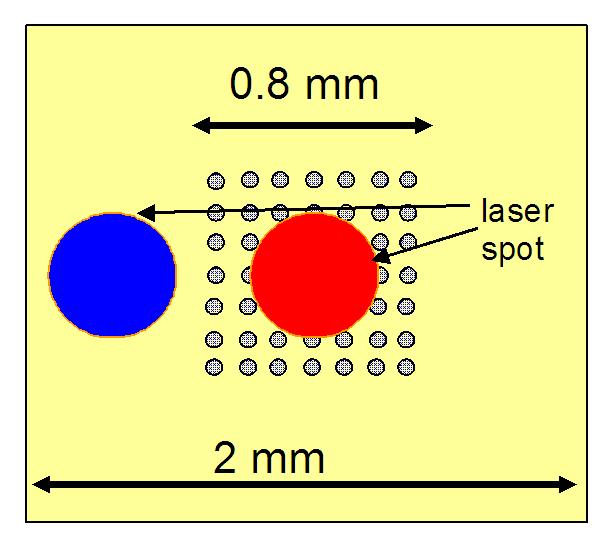Next: 5.3.2 Coherent Reversal Model Up: 5.3 Angular dependence of Previous: 5.3 Angular dependence of Contents

|
![\includegraphics[height=11.cm]{Capitulo5/Graficas5/KerrFigure1}](img736.gif)
|
Fig. 5.11 shows the hysteresis loops
corresponding
to the antidots region and to the continuous film measured in the
film plane along the e.a (a) and the hardest in-plane axis (b) of
the sample.
The measured coercivity is congruent with the result obtained by J.M.
Torres using AGFM, including the different values for the external and
the antidots region.
The TS measurements obtained in the array region along both the e.a.
and
in-plane h.a. (inset in Fig. 5.12)
yielded an
anisotropy field close to ![]() that, by considering the bulk Fe
magnetization value, corresponds to a first order anisotropy
constant value
that, by considering the bulk Fe
magnetization value, corresponds to a first order anisotropy
constant value ![]() , very similar to the
corresponding bulk Fe magnetocrystalline anisotropy constant. The TS
results confirm that the patterning process preserves the original
four-fold symmetry but do
not show any increase of the anisotropy constant with respect to
that of the bulk Fe. This can be related to the fact that
the magnetization oscillations induced during the TS measurements do
not result in significant variations of the dipolar energy of the
moment structures at the antidots surfaces. As for
the angular dependence of the reversal process, the loops measured
in the antidot region with the field applied along a direction at an
angle
, very similar to the
corresponding bulk Fe magnetocrystalline anisotropy constant. The TS
results confirm that the patterning process preserves the original
four-fold symmetry but do
not show any increase of the anisotropy constant with respect to
that of the bulk Fe. This can be related to the fact that
the magnetization oscillations induced during the TS measurements do
not result in significant variations of the dipolar energy of the
moment structures at the antidots surfaces. As for
the angular dependence of the reversal process, the loops measured
in the antidot region with the field applied along a direction at an
angle ![]() with
respect to the Fe e.a. (Fig.
5.12 shows the loops measured at
with
respect to the Fe e.a. (Fig.
5.12 shows the loops measured at ![]() ; and ;
; and ;![]() ) present two
irreversible jumps at fields
) present two
irreversible jumps at fields
![]() and
and ![]() , with the only
exceptions of those measured
along the e.a. (
, with the only
exceptions of those measured
along the e.a. ( ![]() ) and the in-plane h.a. (
) and the in-plane h.a. ( ![]() ), which present a
single jump. Therefore, for these angles the total film magnetization
presents three jumps: two corresponding to the antidot region and the
other one to the non-lithographed film.
Fig. 5.13 shows the evolution of
), which present a
single jump. Therefore, for these angles the total film magnetization
presents three jumps: two corresponding to the antidot region and the
other one to the non-lithographed film.
Fig. 5.13 shows the evolution of ![]() and
and ![]() with
with ![]() : while
: while ![]() slowly decreases,
slowly decreases, ![]() increases sharply
with the
increase of
increases sharply
with the
increase of ![]() .
.
![\includegraphics[height=7.cm]{Capitulo5/Graficas5/KerrFigure2}](img744.gif)
|
![\includegraphics[height=7.cm]{Capitulo5/Graficas5/KerrFigure3}](img745.gif)
|
2008-04-04